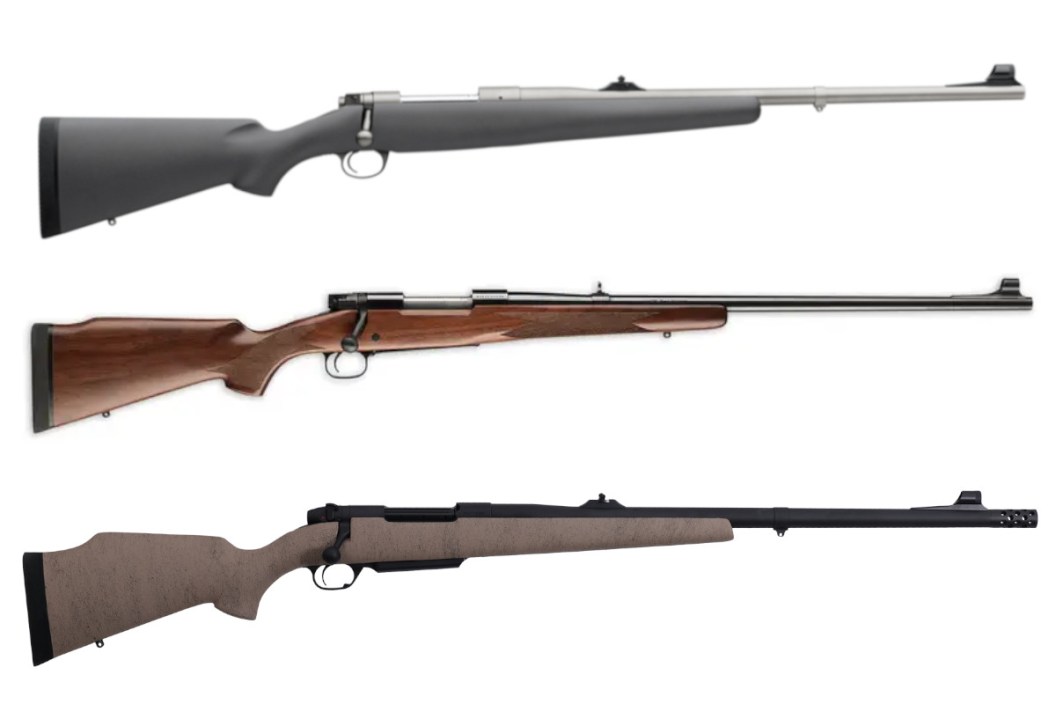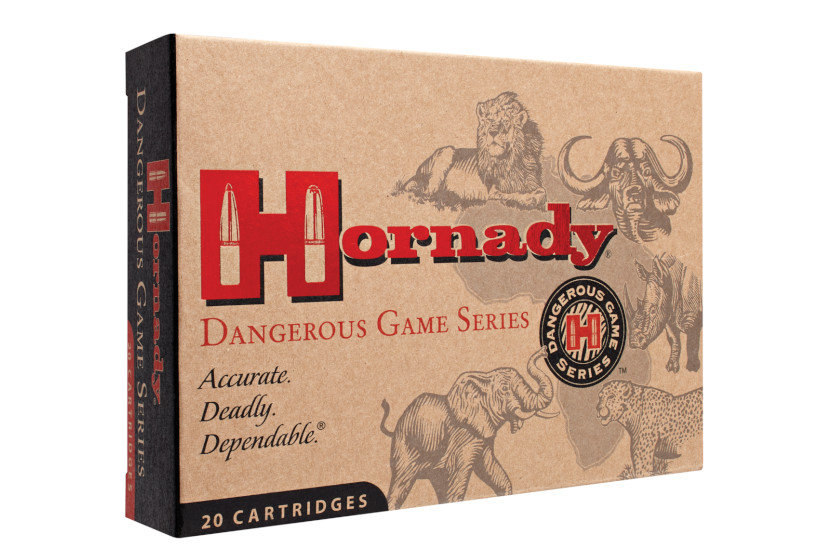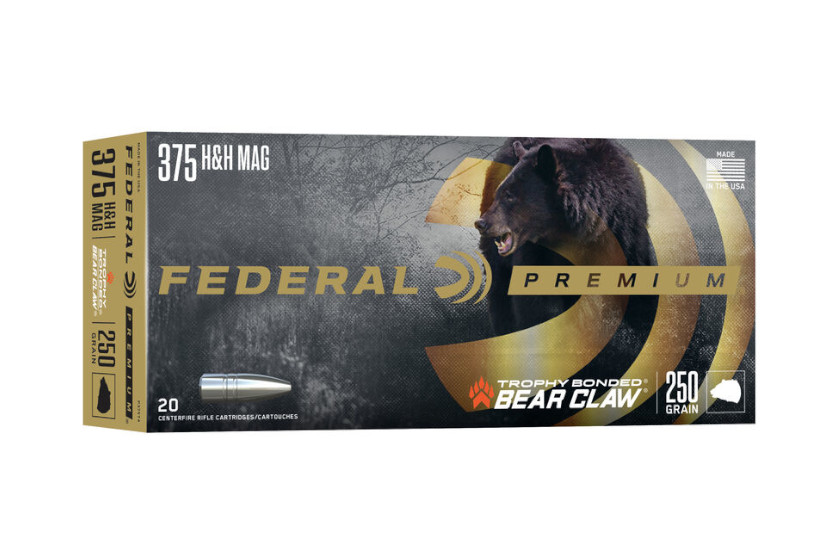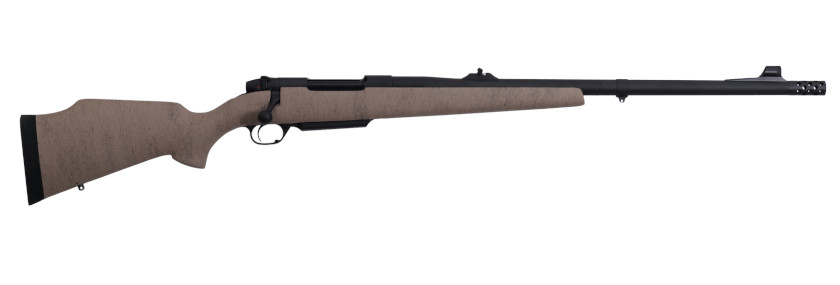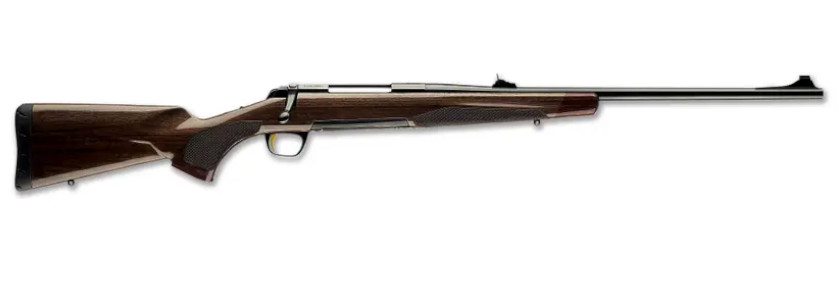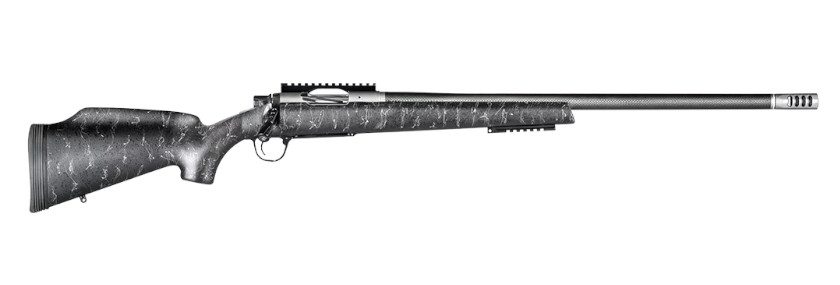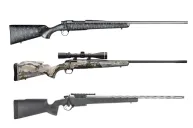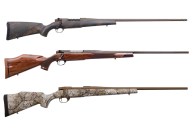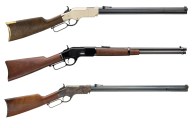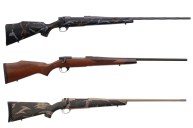One could argue the 375 Holland & Holland magnum is the most famous dangerous game hunting cartridge on Earth. This massive round has earned its reputation in Africa, probably downing more deadly cape buffalo than any other round out there. This is one of those timeless rounds, having been developed more than a hundred years ago, yet it keeps trucking along here in the 21st century due to its impressive speeds, flat trajectory, and massive energy delivered to the target. Make no mistake, it's not a round for everyone. There are plenty of people who have shot this cartridge once and then promptly never touched it again due to the massive recoil. However, when compared to other massive rounds like the 416 Rigby, 375 Ruger, and 458 Lott, this cartridge is one of the more pleasant heavy duty big game cartridges to shoot.
But we're getting ahead of ourselves. Let's look a little at the history and the ballistics of the iconic 375 H&H magnum to see what makes it such an effective round. We'll also examine some of the uses for the cartridge beyond Africa and look at some of the hunting rifles still being chambered for this famous round today.
Ballistics of the 375 H&H
Modern 375 H&H magnum cartridges are incredibly different than when the round was first introduced back in 1912. Those early rounds were inspired by the 9.7x57mm Mannlicher- Schönauer and 9.3x62mm Mauser that were developed specifically with dangerous animals in mind. The 375 was just one of many cartridges that came along in the wake of those rounds. At the time, smokeless powders were still somewhat new, and the first 375s were developed to use cordite.
Today's modern factory loads are much more efficient, even with the cartridge's tapered case, and eke out a bit more performance from a very old design. For instance, take Hornady's DGS (Dangerous Game Series). It's a 300-grain bullet doing 2,530-fps at the muzzle and 2,223-fps at 100 yards. Those are some impressive speeds for such massive bullet weights. However, it's the energy that brings those big animals down. The DGS produces 4,263-foot pounds of energy at the muzzle and 3,292-foot pounds at 100 yards. The bullets are also very flat, Hornady gives zero drop at 200 yards. Hornady's DGX bullets, which are non-expanding copper-clad steel jackets meant for elephants and rhinos, produce near identical numbers.
Most hunters using the 375 are going to use those 300-grain bullets. However, there are lighter bullets available. Hornady also makes a bonded, 270-grain SP-RP Superformance has a muzzle velocity of 2,800-fps and 2,562-fps at 100 yards while dishing out 4,699 and 3,935-foot pounds of energy at those distances respectively. Federal Premium makes a 250-grain Trophy Bonded Bear Claw cartridge that's doing 2,670 at the muzzle and 2,412-fps at 100 yards. Then there's a Nosler Partition Trophy Grade 260-grain, jacketed soft point. It's doing approximately 2,750-fps while dishing out 4,365-foot pounds of energy.
There are pros and cons to 375 factory ammo. The good is that it's the most readily available of the dangerous big game cartridges on the planet, especially in Africa. The downside is that it's quite expensive. Expect to pay over $100 a box, or nearly $6 a round for it. Although most hunters don't shoot it very much due to that massive recoil anyway. Most hunters can probably do a whole safari with only one or two boxes.
Practical Uses for the 357 H&H Mag
While everyone knows 375 H&H Magnum is a powerful round, there is some debate about whether rifles chambered for it can be considered "elephant guns" or not. Even with new advancements in rifle cartridge technology, some hunters choose to pass on the 375 for elephants and rhinos in favor of a bit more gun. However, there are plenty of documented cases of hunters harvesting both animals using the 375 H&H. In fact, there are some hunters who swear this one rifle can kill every big game animal on Earth. Although most will agree that shot placement does become of vital importance on those larger animals like elephants and rhinos. In most cases, the 375 H&H mag is often considered the minimum legal size for hunting big game animals in many African countries.
However, this is a round that's always been known for its versatility. Hunters have used it for plains game like wildebeest, kudu, blackbuck, and more. It is also more than capable of bringing down North American game like elk, moose, bison, muskox, and more. We have heard of people using them for whitetails and mule deer. It's a little excessive, but it's not likely that deer is going very far, if anywhere, after getting hit with one of these.
The 375 has also become a favorite of Alaskan residents and hunting guides as a defense gun when they are deep in the backcountry. To the point that manufacturers are making rifles specifically with that purpose in mind. The 375 is more than capable of stopping an angry brown bear's charge permanently. When it comes to the 375, there's a need to strike a certain amount of balance. This round has a ton of recoil, so you want a slightly heavier rifle. At the same time, you don't want it to be too heavy or it's going to be a chore to carry through the brush in Africa, especially since you may need to raise and fire it quickly in a charge situation. Keep that in mind as we look at some of the top rifles gun makers are still producing for this cartridge these days.
Weatherby Mark V Dangerous Game
The Weatherby Mark V is one of the finest hunting rifles on the planet, and the build is ideal for Africa, Alaska, and everywhere in between. We will warn you it is expensive at $3,600, and Weatherby asks for a 120-day lead time for orders of the 375 H&H version, but the wait is worth it. The barrel length is 26 inches and features 1:12 rate of twist. Weatherby added a Cerakote finish to help protect the rifle from dust, rain, snow, and other elements. Weatherby also include their Accubrake ST to help tame some of the recoil. Weatherby backs this rifle with a sub-MOA accuracy guarantee. This rifle has a short, 54-degree bolt throw, which makes for fasting cycling. The kind you might need for a follow-up on an angry cape buffalo or big cat. We also dig the ergonomics of the Monte Carlo fiberglass stock, especially that raised comb. This rifle isn't for everyone, but it's a fine choice for anyone planning the hunting trip of a lifetime and who wants to leave no doubts about the quality of his or her equipment.
Browning X-Bolt Medallion
This rifle was built specifically with spot and stalking Africa's big five or bears in the Alaska wilderness in mind. Browning sells this rifle with open sights specifically built for moments where you need a fast follow-up shot. This rifle has a 24-inch barrel with a 1:12 rate of twist. We love the black walnut stock and classic blued finish. They give this rifle a nice, classic look that's perfect for the traditionalist. We also appreciate the Inflex recoil pad, which is going to help significantly with the 375's awesome recoil. Perhaps the most impressive aspect of this rifle is the fact that Browning kept the weight down to just seven pounds. It'll be a little harder on your shoulder than some other options, but if you're not afraid of recoil, it'll be a breeze to carry through the brush while you're trying to sneak up on a dangerous animal. The MSRP is $1,279.99, but it's going to be available for less than that from most retailers. That makes the X-Bolt one of the more affordable options for this cartridge out there.
Winchester Model 70 Alaskan
This is the one to consider if you're wanting to pick up a 375 with bears in mind. There's also a weight consideration with this one. Winchester also makes a safari version of this same rifle that comes in at nine pounds. The Alaskan comes in at a little over eight, so it's going to be slightly easier to hike with. The Model 70 has a gorgeous black walnut Monte Carlo stock with a stain finish and checkering. This rifle has a free floating, 25-inch barrel with a 1:12 twist rate. This rifle features Winchester's famous "pre-64" claw extractor, which helps it to cycle better than every other rifle on this list. Important if you're concerned about a follow-up on a charging, wounded animal. We also like the crisp, M.O.A. trigger system that breaks so cleanly every time. This one can usually be found for about $1,300 from most major retailers.
Christensen Arms Traverse
For the hunter who wants the reliability of an old cartridge design combined with the latest in modern rifle technology, the Traverse is a fine choice. Christensen Arms gives their 375 H&H offering a free floating 22-inch carbon fiber wrapped barrel with a 1:12 twist rate. It's made from 416R stainless steel, and it's going to stand up to the elements extremely well. They also include a removable baffle brake, although we recommend keeping that on to help mitigate the recoil. The Monte Carlo stock is made from a carbon fiber composite, helping keep it light and durable. The ergonomics on this rifle are excellent thanks to the raised comb and full palm swell. We also appreciate the M16-style extractor and the crisp Trigger Tech trigger system. The company has a sub-MOA accuracy guarantee with these rifles. The MSRP is a hefty $2,549, but this is one of the most modern 375 H&Hs on the planet today.
Kimber Talkeetna
Known better for their handguns, Kimber has quietly been making some fine hunting rifles for a while now. One of those is the Talkeetna, which was designed with Alaska in mind. Although you could bring it along on an African safari if you wanted too. Kimber gave this rifle a 24-inch satin stainless steel barrel with a 1:12 twist rate and a match grade chamber. It sits atop a reinforced carbon fiber stock with both pillar and glass bedding. It also has a nice Pachmayr Decelerator pad on the end to tame the kick. The company gave this rifle a Mauser-type claw extractor and a Model 70-style three-position wing safety. Kimber also gave the rifle an adjustable trigger This one is going to be a breeze to carry on a spot and stalk at 7.5 pounds. The MSRP for this rifle is right around $2,500, which is about what you're going to pay for a modern 375 H&H these days.
For more outdoor content from Travis Smola, be sure to follow him on Twitter and Instagram For original videos, check out his Geocaching and Outdoors with Travis YouTube channels.
